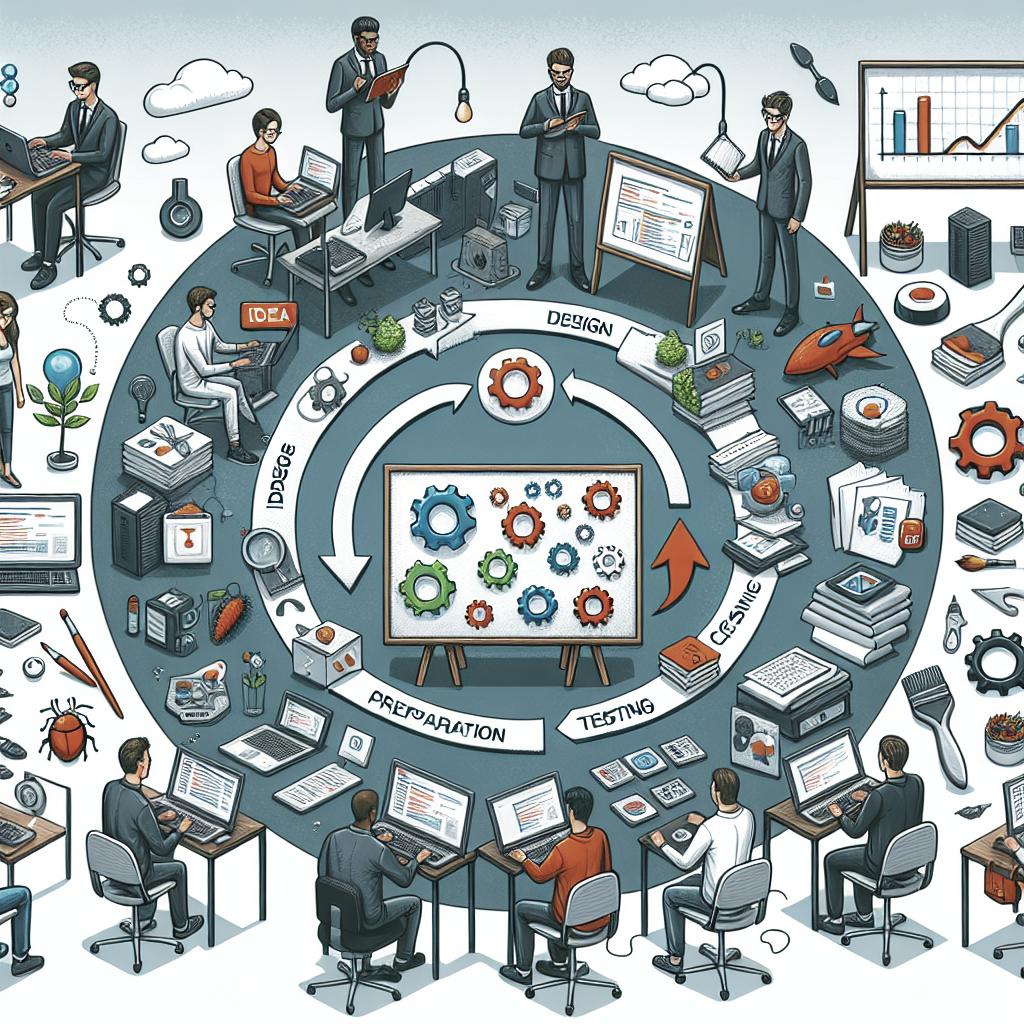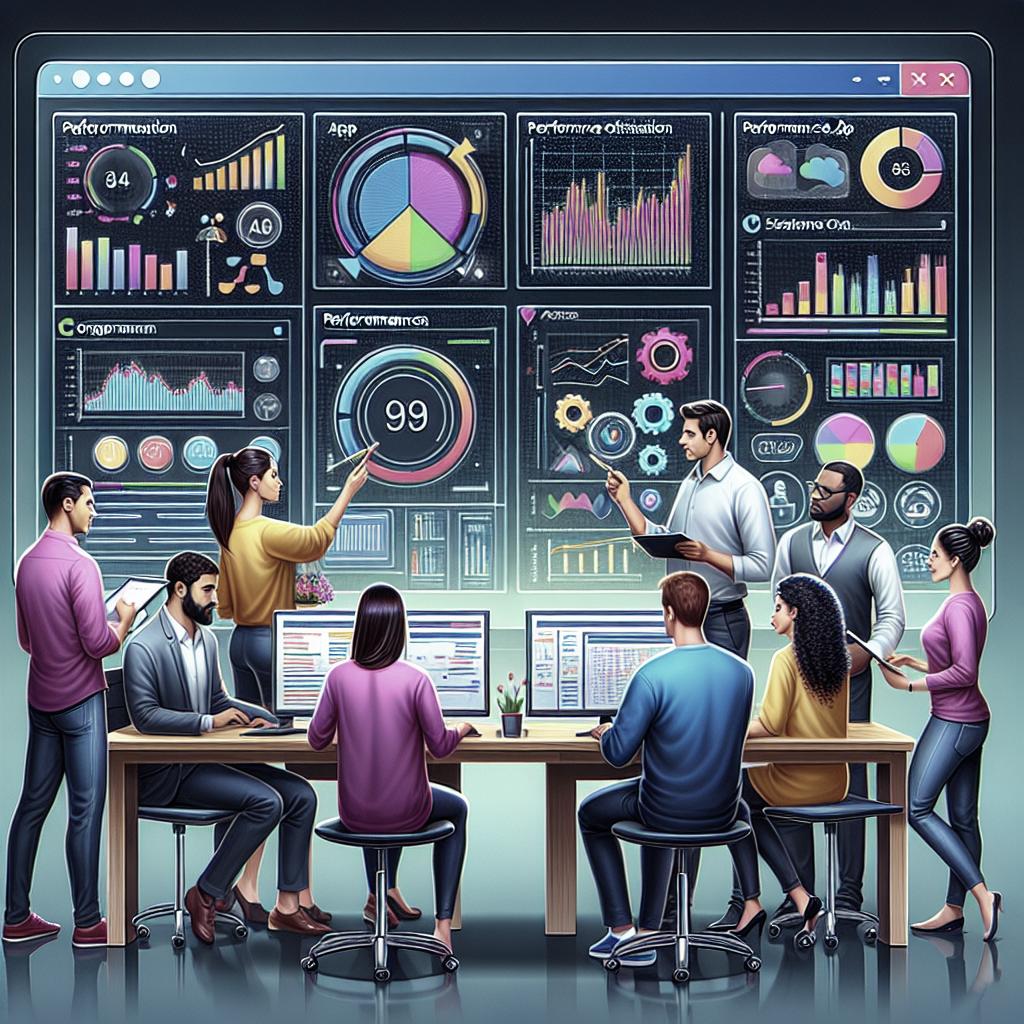Understanding App Development Lifecycle Management: A Comprehensive Guide
Embarking on the journey of app development is akin to nurturing a product from concept to completion. The App Development Lifecycle Management (ALM) involves a strategic approach to bring an application to life and ensuring its growth in the market. This article delves into the six crucial stages of ALM—from initial development to eventual decline. Each stage plays a pivotal role in the app’s existence, helping developers and businesses maintain precision and relevance. By navigating the intricacies of ALM, developers can streamline processes, optimize resources, and ultimately, enhance user experience.
Get the latest updates about our blog posts.
Stay informed about the latest trends and insights in app development by subscribing to our newsletter. With regular updates directly in your inbox, you’ll keep abreast of cutting-edge techniques and strategies. Don’t miss out on important industry breakthroughs—subscribe today!
The Six Stages of ALM
1. App Development
The first stage of the App Development Lifecycle is where the magic begins—conceptualization and planning. A clear vision, comprehensive research, and an understanding of user needs form the foundation of a successful app. During this phase, developers pen down specifications, select suitable technologies, and engage in prototyping. Collaboration among designers, developers, and project managers is critical to ensure alignment and feasibility.
As development commences, employing agile methodologies can enhance adaptability and rapid enhancement. This approach enables iterative progress, allowing teams to introduce features gradually while collecting user feedback. Regular testing and quality assurance checks are vital to guaranteeing that the final product is robust and bug-free before transitioning to the next stage.
2. Introduction to the Market
Once development is complete, the next step is to introduce the application to its target audience. This phase often involves launching marketing campaigns to create buzz and ensure a successful entry into the market. As part of this strategy, understanding the target market, devising promotional tactics, and leveraging social media platforms can significantly boost visibility.
A seamless onboarding process is important to ensure that early adopters have a positive user experience. Simultaneously, maintaining customer support and monitoring feedback channels allows developers to address initial issues promptly. The primary objective during this stage is to build a solid user base and foster a community around the app.
3. Growth
In the growth stage, the focus shifts towards scaling the user base and expanding feature sets. By continuously analyzing user data and feedback, developers can identify areas for enhancement and opportunities for introducing new functionalities. Effective performance optimization and regular updates keep the application fresh and engage users.
Strategic partnerships and collaborations can also play a significant role in this phase, unlocking new markets and audiences. In essence, this stage is about solidifying the app’s presence and setting the stage for long-term success by maintaining a sustained growth trajectory.
4. Maturity
The maturity stage signifies a stable user base and revenue stream. At this juncture, the application has become a staple for its users, commanding loyalty and trust. However, complacency is not an option; regular updates, maintenance, and customer engagement are still fundamental to preserving relevance.
Exploring additional revenue channels through premium features, subscription models, or advertising can further enhance the app’s profitability. In some scenarios, rebranding or expansion to new platforms may be necessary to reach new heights in a mature market. Maintaining a balanced presence will ensure the app remains competitive and thriving.
5. Saturation
During the saturation stage, growth plateaus, and new user acquisition begins to slow down. It’s a critical time for evaluating the app’s standings in a crowded marketplace and identifying opportunities for differentiation. At this point, innovation becomes the key to reinvigorate interest and sustain user engagement.
Developers might explore untapped niches, aim to improve user experience, or implement gamification features to enhance interaction. Keeping an eye on competitors and market shifts will provide further insights on how to manage this stage effectively. The aim is to postpone decline and maintain a steady flow of existing users.
6. Decline
The decline stage represents the eventual decrease in user base and revenue. External factors like technological advancements or market changes might contribute to this downtrend. While it’s challenging to reverse a decline, there are strategies that can be employed to mitigate the effects.
Revitalizing the app through significant updates, pivoting to new business models, or even launching a new version can reignite interest. Understanding user needs and adapting to market demands can occasionally salvage the app from obsolescence. If not, preparing for an exit strategy ensures that resources can be allocated effectively towards fresh ventures.
How to implement a mobile or web application with precision and relevance?
In order to implement a mobile or web application with precision and relevance, it is crucial to remain user-centric throughout the entire lifecycle. Start by identifying your target audience and conducting thorough market research. This ensures that your app serves real-world needs and stands out amidst competition.
Employ modern development practices, including agile methodologies and continuous integration, to enhance flexibility and facilitate real-time improvements. Regular testing and updates are indispensable in maintaining the app’s relevance in a dynamically evolving market.
Post-launch, leverage data analytics to make informed decisions for future enhancements and measure user engagement. Being receptive to user feedback and adapting accordingly will ensure your application remains significant and valued in its respective domain.
Next steps
| Stage | Description |
|---|---|
| App Development | Planning, designing, and building the application with agile methodologies. |
| Introduction to the Market | Launching and marketing the app to establish a user base and community. |
| Growth | Scaling the app with new features and optimizing performance to expand user base. |
| Maturity | Maintaining existing users, exploring new revenue channels, and ensuring app stability. |
| Saturation | Faced with slowed growth, identifying differentiation strategies to maintain engagement. |
| Decline | Addressing reduced user base through revitalization efforts or planned exit. |
By understanding and mastering each stage of the App Development Lifecycle, developers can ensure that their applications succeed in meeting user expectations and thrive in a competitive market. Stay vigilant of emerging trends and be ready to adapt, managing the lifecycle with strategic foresight and creativity.


